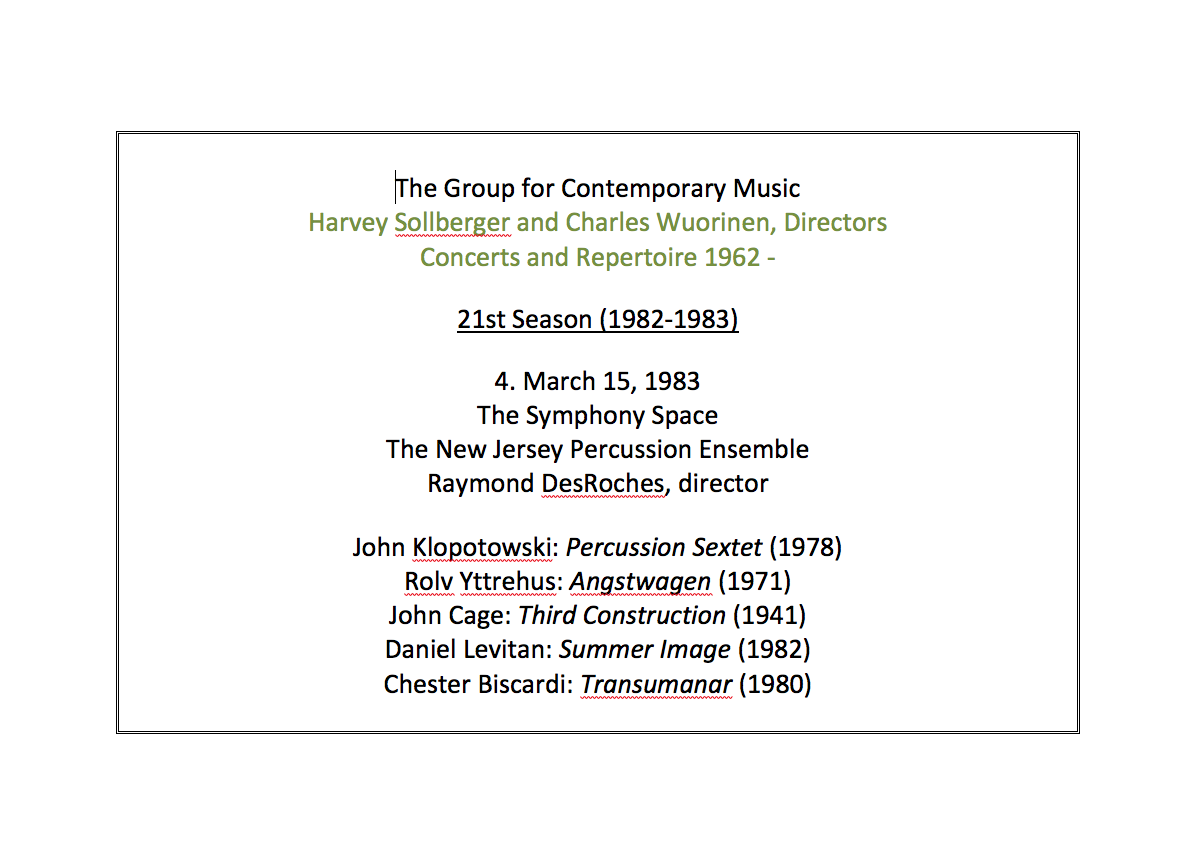Media : Listen
Live Performance
The New Jersey Percussion Ensemble
Raymond Des Roches, conductor
Symphony Space
New York City
March 15, 1983; presented and recorded by
The Group for Contemporary Music

The piano, which introduces the basic motivic, harmonic, and rhythmic ideas, functions less as a solo instrument than as a means to unify and give motion to a music which varies between being static and highly dynamic. The relationship of the piano to the percussion ensemble was suggested by works for piano and electronic sounds: the percussion functions as an electronic tape – extending, amplifying, and interacting with the sounds of the piano.
“Trasumanar” is a word coined by Dante to describe the experience of rising above the human state. At the beginning of the Paradiso, Dante’s human nature is transmuted to a higher level. He is left bewildered by the sensual pull of being human and the spiritual aspiration to transcend human experience. The dramatic tension created by this struggle provides the structural framework of Trasumanar.
Trasumanar was written for The New Jersey Percussion Ensemble and its director, Raymond DesRoches, with invaluable assistance from percussionist Joseph Passaro.
